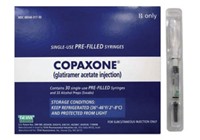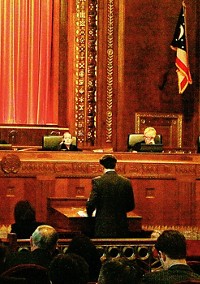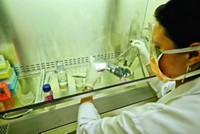Advertisement
Grab your lab coat. Let's get started
Welcome!
Welcome!
Create an account below to get 6 C&EN articles per month, receive newsletters and more - all free.
It seems this is your first time logging in online. Please enter the following information to continue.
As an ACS member you automatically get access to this site. All we need is few more details to create your reading experience.
Not you? Sign in with a different account.
Not you? Sign in with a different account.
ERROR 1
ERROR 1
ERROR 2
ERROR 2
ERROR 2
ERROR 2
ERROR 2
Password and Confirm password must match.
If you have an ACS member number, please enter it here so we can link this account to your membership. (optional)
ERROR 2
ACS values your privacy. By submitting your information, you are gaining access to C&EN and subscribing to our weekly newsletter. We use the information you provide to make your reading experience better, and we will never sell your data to third party members.
Policy
U.S. Supreme Court facilitates larger patent damage awards
Ruling gives patent owners greater clout in infringement cases
by Glenn Hess, special to C&EN
June 16, 2016
| A version of this story appeared in
Volume 94, Issue 25
The U.S. Supreme Court handed patent owners a major victory last week, easing the way for larger financial awards in some infringement lawsuits.
The ruling could give companies that rely heavily on intellectual property rights, such as those in the pharmaceutical and medical technology sectors, a stronger hand in patent infringement litigation, attorneys say.
“This decision is a good one for patent stakeholders and makes each individual patent potentially more valuable,” says Susan E. McBee, a partner at the law firm McBee Moore Woodward & Vanik IP.
The high court case revolved around how courts determine whether a patent infringer should pay so-called treble damages—actual monetary damages multiplied by three.
The eight justices ruled unanimously that an appeals court had adopted an “overly rigid” test that federal judges must use to determine whether to award treble damages.
“The Supreme Court makes a judicial determination of willful infringement with the consequent threat of triple damages a much more serious risk for an accused patent infringer,” says Kendrew H. Colton, a partner at Fitch, Even, Tabin & Flannery.
“It especially heightens the importance of the accused infringer’s prelitigation conduct and proof of that conduct,” notes Colton, a member and former chair of the Chemistry & the Law Division of the American Chemical Society. ACS publishes C&EN.
The U.S. Court of Appeals for the Federal Circuit, the nation’s top patent court, had determined that treble damages were available only if the patent owner could show “objective recklessness” by the infringer. That strict standard had nearly eliminated the awarding of enhanced damages in patent cases.
In the high court’s opinion, Chief Justice John Roberts said the Federal Circuit was wrong to require clear and convincing evidence of recklessness for the awarding of enhanced damages. This heightened standard of proof is not mentioned in the Patent Act.
However, Roberts cautioned that enhanced damages should not be imposed in “garden variety” infringement cases. Instead, they should “generally be reserved for egregious cases typified by willful misconduct,” he wrote.
The ruling came in a pair of consolidated cases involving Stryker Corp., a medical device maker, and Halo Electronics, which makes circuit board transformers. Both were denied enhanced damages by the Federal Circuit after winning patent infringement lawsuits against competitors.





Join the conversation
Contact the reporter
Submit a Letter to the Editor for publication
Engage with us on Twitter